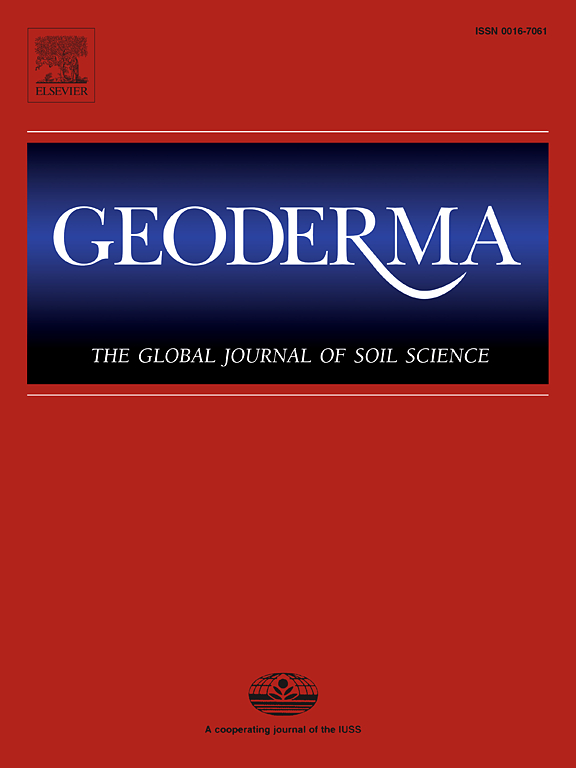Soil organic matter degradability as a function of forest species, a study based on Py-GC–MS analysis
IF 6.6
1区 农林科学
Q1 SOIL SCIENCE
引用次数: 0
Abstract
A significant proportion of the global organic carbon reservoir is stored in forest soils, which cover 30 % of continental surfaces. This carbon stock could be affected by ongoing climate change, but also by changes in land use such as forest management. In particular, changes in forest species will alter the quantity and molecular quality of organic matter added to the soil. However, how this will affect the degradability of soil organic matter and, consequently, the potential mineralisation of carbon in forest soils, is poorly understood. In this study, the overall degradability potential of soil organic matter (top 20 cm) was estimated for four forest types: mixed beech, i.e., the potential natural vegetation, and three coniferous species planted at least 50 years ago (spruce, Douglas fir and silver fir). Molecular results obtained using Py-GC–MS show a higher overall degradability potential of organic matter in soils under silver fir compared with soils under Douglas fir, with higher polysaccharide content and lower aliphatic compound content. This is consistent with higher water-extractable soil organic carbon concentration in silver fir samples. Mixed beech stands exhibit intermediate degradability. Pyrolysis-GC–MS revealed a good correlation between degradability potential, based on relative proportions of molecular families, and the level of molecular diversity estimated by the Shannon index. These results suggest that promoting molecular diversity would lead to lower degradability and thus reduced carbon losses through mineralisation.
基于Py-GC-MS分析的森林树种土壤有机质可降解性研究
全球有机碳储量的很大一部分储存在森林土壤中,森林土壤覆盖了大陆表面的30%。这种碳储量可能受到持续的气候变化的影响,也可能受到森林管理等土地利用变化的影响。特别是,森林物种的变化将改变添加到土壤中的有机质的数量和分子质量。然而,这将如何影响土壤有机质的可降解性,从而影响森林土壤中潜在的碳矿化,人们知之甚少。在本研究中,估算了四种森林类型的土壤有机质(表层20 cm)的总体降解潜力:混合山毛榉,即潜在的天然植被,以及三种种植至少50年的针叶林(云杉、花旗松和银杉)。通过Py-GC-MS获得的分子分析结果表明,与花旗松相比,银杉土壤中有机质的整体降解潜力更高,多糖含量更高,脂肪化合物含量更低。这与银杉样品中较高的水可提取土壤有机碳浓度一致。混合山毛榉林表现出中等的可降解性。热解-气相色谱-质谱分析显示,基于分子家族相对比例的降解潜力与Shannon指数估计的分子多样性水平之间存在良好的相关性。这些结果表明,促进分子多样性将导致更低的可降解性,从而减少矿化过程中的碳损失。
本文章由计算机程序翻译,如有差异,请以英文原文为准。
求助全文
约1分钟内获得全文
求助全文
来源期刊

Geoderma
农林科学-土壤科学
CiteScore
11.80
自引率
6.60%
发文量
597
审稿时长
58 days
期刊介绍:
Geoderma - the global journal of soil science - welcomes authors, readers and soil research from all parts of the world, encourages worldwide soil studies, and embraces all aspects of soil science and its associated pedagogy. The journal particularly welcomes interdisciplinary work focusing on dynamic soil processes and functions across space and time.
 求助内容:
求助内容: 应助结果提醒方式:
应助结果提醒方式:


